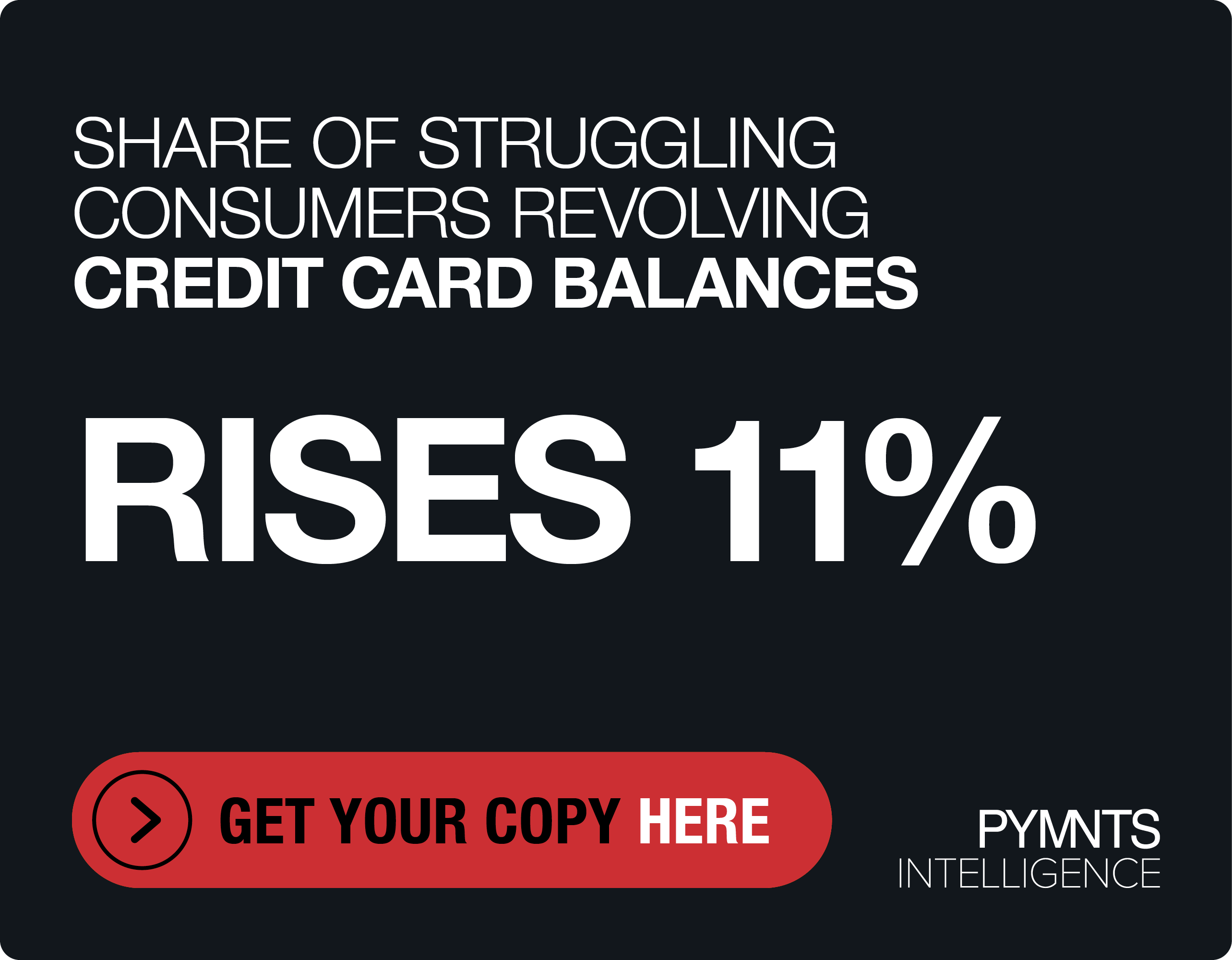Walmart’s Digital Blind Spot Helped Amazon Win Summer Sales Standoff
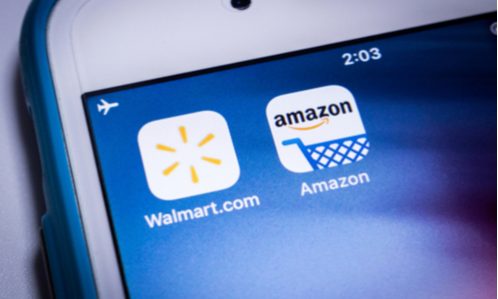
Summer deals got financially fraught consumers to shop both Amazon Prime Day and Walmart+ Week in mid-July. But according to PYMNTS data, twice as many Amazon Prime members made purchases during Prime Day than Walmart shoppers did during Walmart+ Week, showing the digital blind spot still haunting Walmart+ three years after launch.
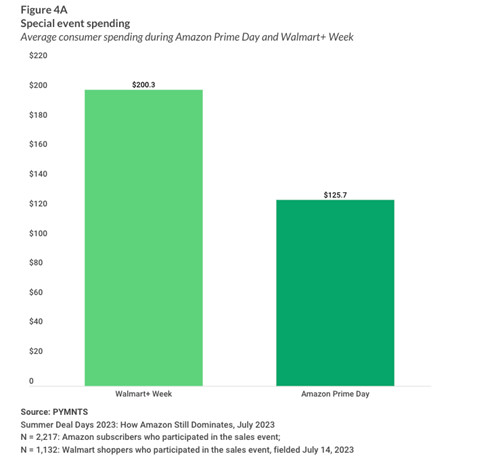
PYMNTS surveyed over 5,500 Amazon Prime members and Walmart customers for the study Summer Deal Days 2023: How Amazon Still Dominates, notably finding that 40% of consumers made purchases on Amazon Prime Day, while only 20% participated in Walmart+ Week.
Despite this, Walmart+ Week shoppers spent nearly twice as much as Amazon Prime shoppers on the strength of groceries and exclusives. We found that more than half of Walmart+ Week shoppers bought groceries during the event, or at least twice as many as the Amazon Prime members who did the same.
On average, Amazon Prime subscribers reported spending $126 during the event, while Walmart shoppers said they spent, on average, $200 during Walmart+ Week. This resulted in a total spending of $12.7 billion for Amazon Prime Day and an estimated $10.5 billion for Walmart+ Week.
Walmart’s higher per-customer spend is largely an effect of grocery shoppers who happened to be in stores on deal days and bought more, though many didn’t go knowing the event was on.
Comparatively, participation in Amazon Prime Days increased from 38% last year to 46% in July 2023, further supporting two notions: that Amazon Prime Days draw bigger crowds as consumers expect more deals on a larger assortment; and that Walmart+ Week needs more effective marketing. We found that over four in 10 (43%) consumers did not participate in Walmart+ Week simply because they weren’t aware it was happening.
Amazon Wins On Engagement
Low-income shoppers and high-income shoppers alike chose Amazon Prime Day over Walmart+ Week, while 60% of bridge millennials and 57% of consumers earning more than $100,000 annually purchased as part of at least one of the events.
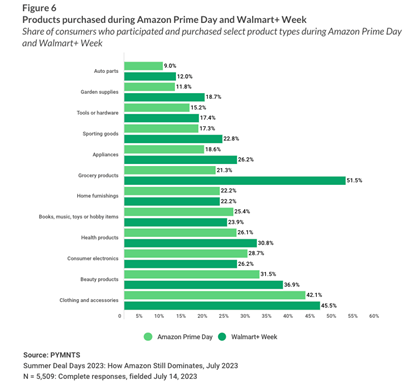
Among high-income consumers, Amazon maintained its lead with more than twice the share of participants who earned more than $100,000 annually.
PYMNTS research also found that Amazon Prime subscribers were more engaged during that event as more Prime members made purchases than the previous year. Walmart+ Week numbers doubled from the $5.6 billion spent during last year’s event, mostly on the strength and cost of groceries and the fact that this year’s event was open to the general public. Walmart+ Week offered public access to this year’s sale.
But Amazon still won out as 59% of Amazon Prime subscribers took part in Prime Day.
The two retail giants paced each other closely within several non-grocery categories, but with double the participation, Amazon shoppers outspent Walmart’s by $2.2 billion overall. As PYMNTS reported, “Amazon had a slight advantage in electronics over Walmart (29% versus 26%, respectively) and on books, music, toys, and hobby items (25% for Amazon compared to 24% for Walmart).” However, Walmart’s appliance sales beat Amazon’s (26% versus 19%, respectively), as did its sporting goods numbers (23% for Walmart vs. 17% for Amazon).
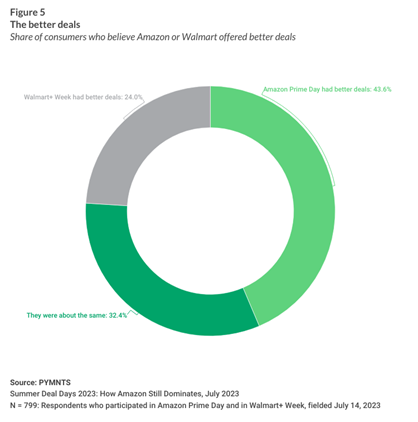
As for who had the better deals, 43.6% of respondents said Amazon versus 24% for Walmart+ Week — a spread of nearly 20%. Roughly one-third of shoppers surveyed (32.4%) said the two retailers’ deals were about the same.
In the final analysis, Amazon came out of 2023 summer sales events stronger, having captured more low- and high-income shoppers, had more engaged members, and was perceived as offering better deals. But even with half the share of participation, Walmart+ Week shoppers spent almost twice that of Amazon Prime shoppers, which is a dynamic Walmart can build on.

